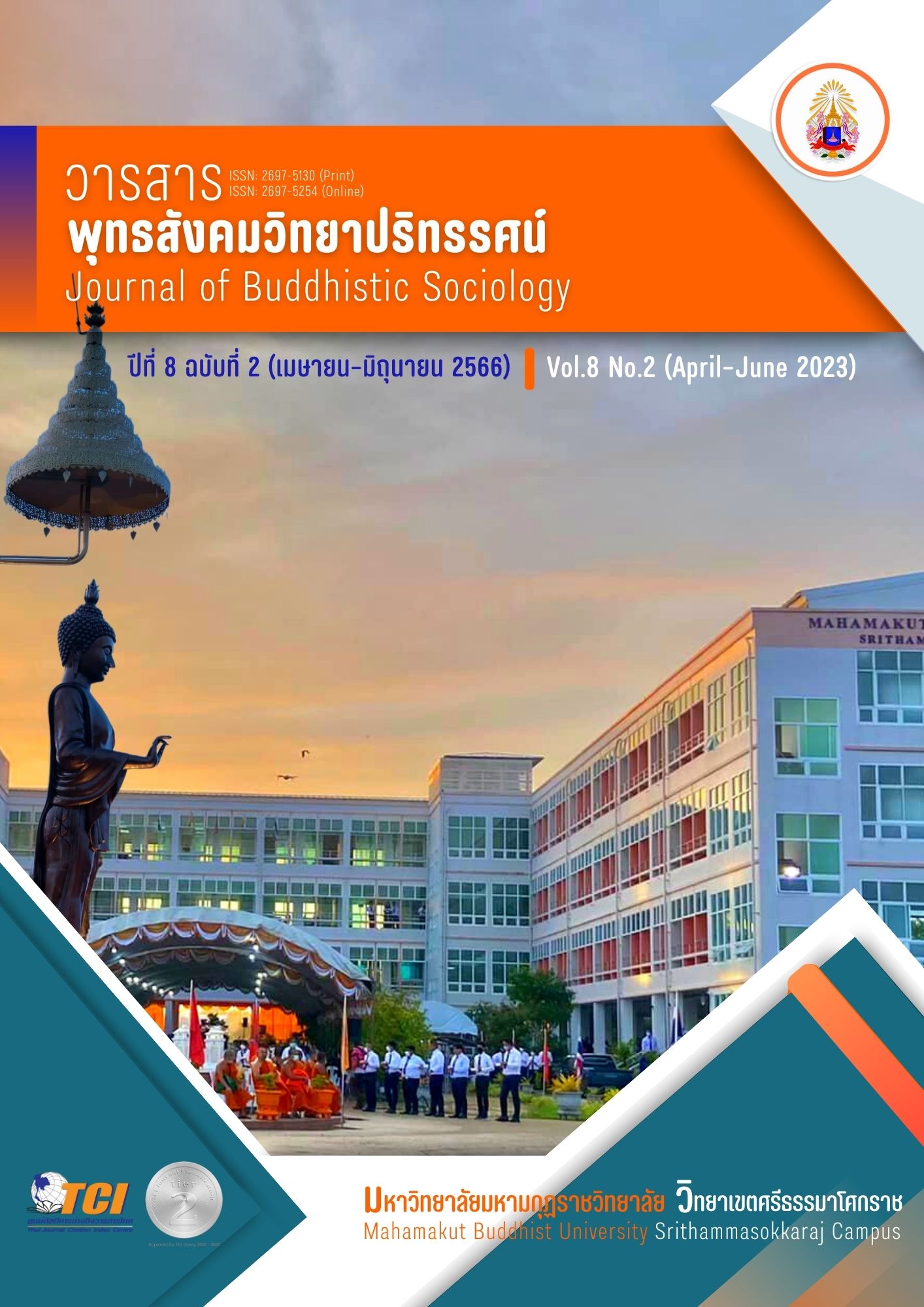ASSESSMENT OF THE SUFFICIENCY ECONOMY PROJECT OF RAJAPRACHANUKROH 1 SCHOOL UNDER THE OFFICE OF KRABI PRIMARY EDUCATIONAL SERVICE AREA
Main Article Content
Abstract
This project assessment aimed to 1) evaluate the context of the Sufficiency Economy Project of Rajaprachanukroh 1 School under the Office of Krabi Primary Educational Service Area, 2) evaluate the input factors of the Sufficiency Economy Project of Rajaprajanukroh 1 School under the Office of Krabi Primary Educational Service Area, 3) evaluate the process of the Sufficiency Economy Project of Rajaprajanukroh 1 School under the Office of Krabi Primary Educational Service Area, and 4) evaluate the results of the Sufficiency Economy Project of Rajaprachanukroh 1 School under the Office of Krabi Primary Educational Service Area. The sample group comprised three school administrators, one president of the educational committees, 14 teachers, 28 parents, and 108 high school students, totaling 154 persons. The sample group was selected by stratified random sampling using the Krejcie & Morgan sample size grid. The instrument used in this research was the opinion questionnaire. The statistics for data analysis were frequency, percentage, arithmetic mean, standard deviation.
The research showed that;
Overall, the evaluation of the Sufficiency Economy Project of Rajaprajanugroh 1 School under the Krabi Primary Educational Service Area Office was the highest. When considering each aspect, there were three items at the highest level, and 1 item at the high level, arranged by the arithmetic mean value from highest to lowest: input, context, outcome, and process. The details were as follows:
1. Overall, the context of the Sufficiency Economy Project of Rajaprajanugroh 1 School under the Krabi Primary Educational Service Area Office was appropriate at the highest level.
2. Overall, the inputs of the Sufficiency Economy Project of Rajaprajanugroh 1 School under the Krabi Primary Educational Service Area Office was appropriate at the highest level.
3. Overall, the process of the Sufficiency Economy Project of Rajaprajanugroh 1 School under the Krabi Primary Educational Service Area Office was appropriate at the highest level.
4. Overall, the outcome of the Sufficiency Economy Project of Rajaprajanugroh 1 School under the Krabi Primary Educational Service Area Office was appropriate at the highest level.
Article Details

This work is licensed under a Creative Commons Attribution-NonCommercial-NoDerivatives 4.0 International License.
References
กระทรวงศึกษาธิการ. (2560). แผนการศึกษาแห่งชาติ พ.ศ. 2560-2579. กรุงเทพมหานคร: สำนักงานเลขาธิการสภาการศึกษา.
ขวัญนภา อุณหกานต์. (2559). การประเมินโครงการเศรษฐกิจพอเพียงของโรงเรียนสวนแตงวิทยา จังหวัด สุพรรณบุรี. สุพรรณบุรี: โรงเรียนสวนแตงวิทยา.
ธงชัย เหมเกียรติกุล. (2559). การประเมินผลโครงการพัฒนาผู้เรียนด้วยการน้อมนำหลักปรัชญาของเศรษฐกิจพอเพียงตามแนวพระราชดำริในโรงเรียนร่มโพธิ์วิทยา อำเภอขุนหาญ จังหวัดศรีสะเกษ. ศรีสะเกษ: โรงเรียนร่มโพธิ์วิทยา.
พระมหาเกียรติศักดิ์ เทศบุตร. (2553). การนำนโยบายแนวคิดปรัชญาเศรษฐกิจพอเพียงไปปฏิบัติในสถานศึกษา สังกัดกรุงเทพมหานคร เขตปทุมวัน. พิษณุโลก: มหาวิทยาลัยนเรศวร.
ราชกิจจานุเบกษา. (2562). พระราชบัญญัติการศึกษาแห่งชาติ (ฉบับที่ 4) พ.ศ. 2562. เล่ม 136 ตอนที่ 57 ก. 1 พฤษภาคม 2562.
สำนักงานคณะกรรมการการศึกษาขั้นพื้นฐาน. (2556). แนวทางการขันเคลื่อนปรัชญาเศรษฐกิจพอเพียงสู่สถานศึกษา ปีการศึกษา 2556. กรุงเทพมหานคร: โรงพิมพ์คุรุสภาลาดพร้าว.
สำนักวิชาการ สำนักงานเลขาธิการสภาผู้แทนราษฎร. (2561). บทบัญญัติด้านการศึกษาตามรัฐธรรมนูญแห่งราชอาณาจักรไทย พุทธศักราช 2560. เรียกใช้เมื่อ 30 กันยายน 2565 จาก http://www.parliament.go.th/library
โสภณ ทองจิตร. (2559). การประเมินโครงการขับเคลื่อนปรัชญาของเศรษฐกิจพอเพียงสู่สถานศึกษา โรงเรียนน้ำรอบวิทยา สำนักงานเขตพื้นที่การศึกษามัธยมศึกษา เขต 11. สุราษฎร์ธานี: โรงเรียนน้ำรอบวิทยา.
Best, John W. (1993). Research in Education. Boston MA.: Allyn and Bacon.
Stufflebeam, D. L., & Shinkfield, A. J. (2007). Evaluation theory, models and applications. San Francisco, CA: Jossey-Bass.


